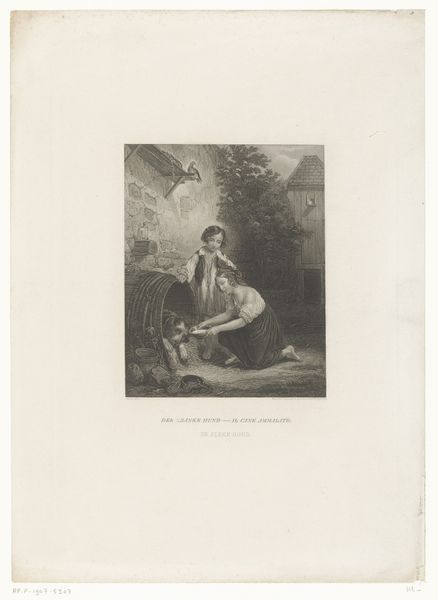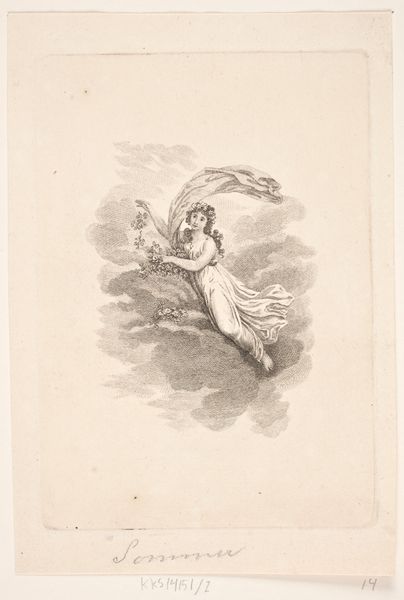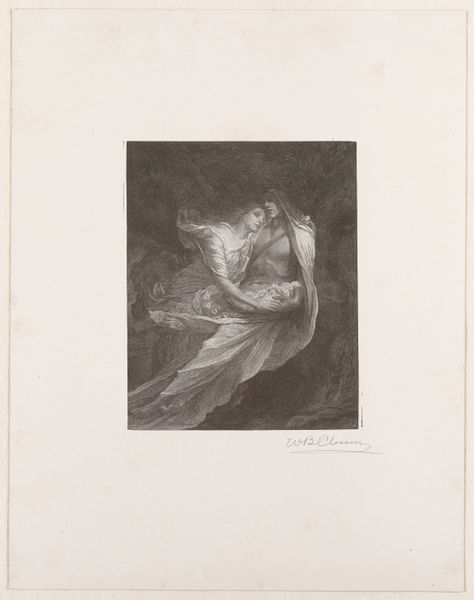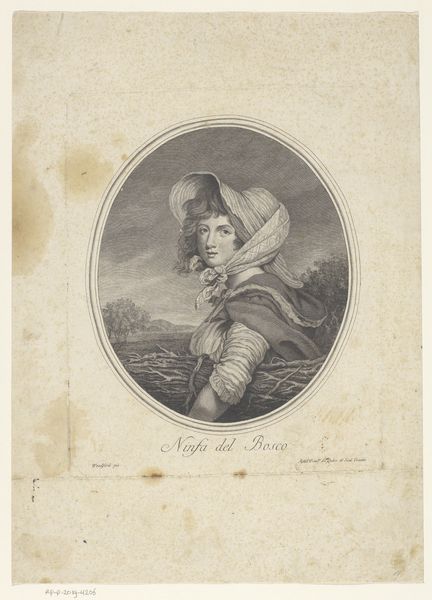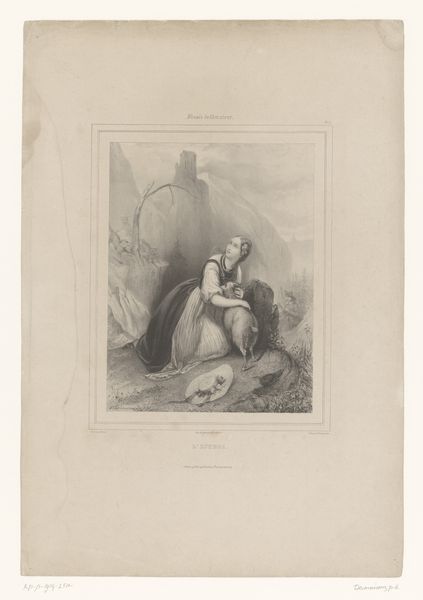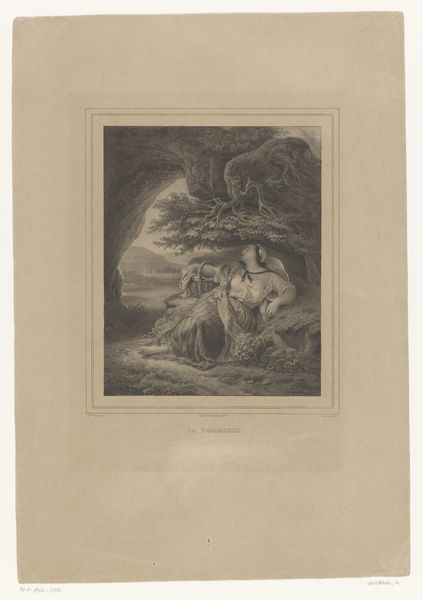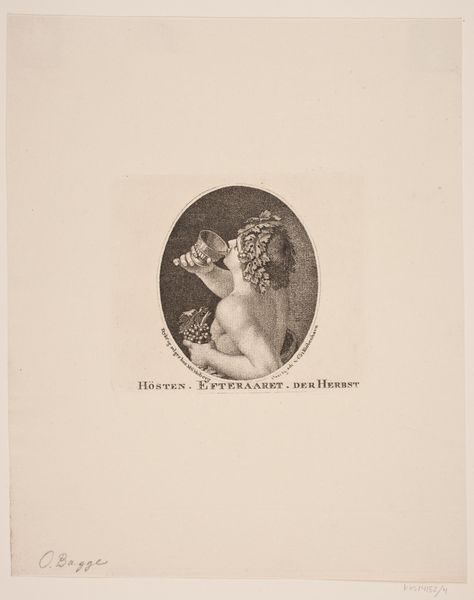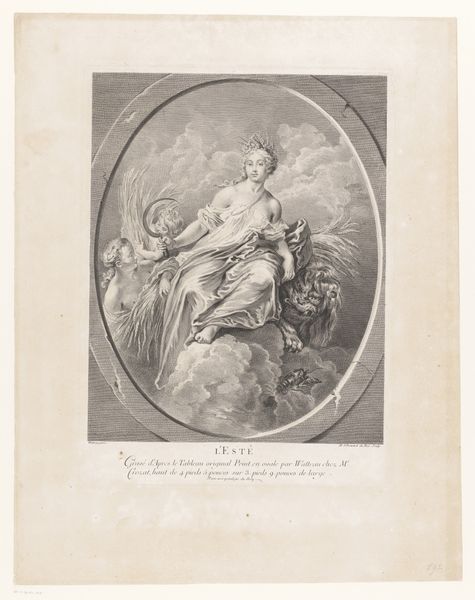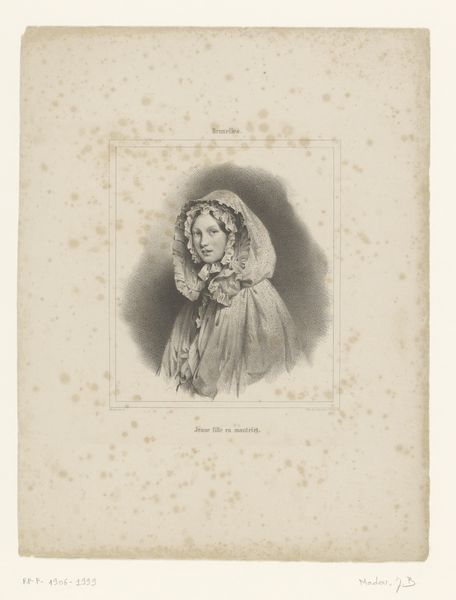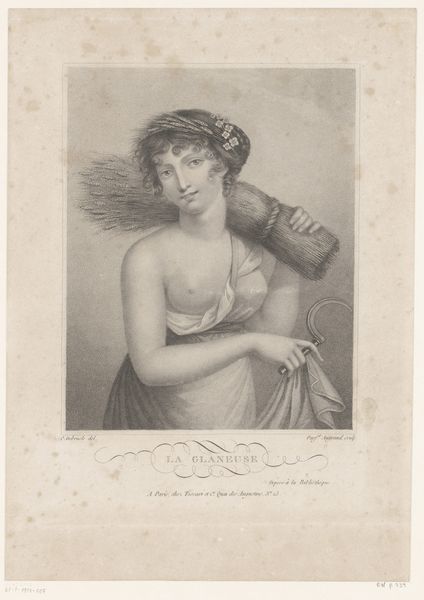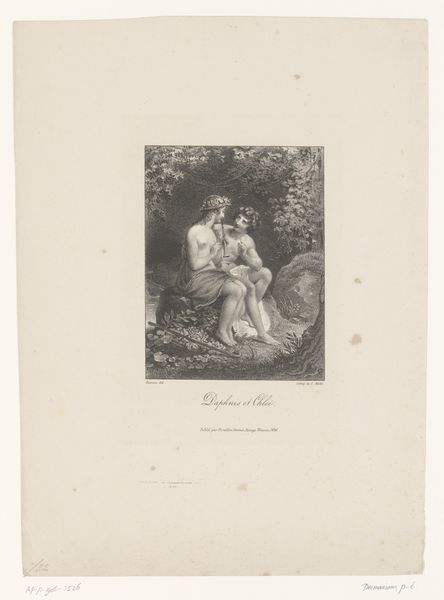
engraving
#
neoclacissism
#
allegory
#
yellowing background
#
nude
#
engraving
#
monochrome
Dimensions: height 298 mm, width 220 mm
Copyright: Rijks Museum: Open Domain
Editor: Here we have "Psyche met een kleine doos," or "Psyche with a Small Box," an engraving created sometime between 1800 and 1900 by W. Nicholas. The monochrome palette gives it a rather ethereal, otherworldly feel. What compositional elements stand out to you? Curator: Immediately, I am struck by the interplay of light and shadow across Psyche's form, creating a soft, almost sculptural quality. Observe how the artist uses hatching and cross-hatching techniques to render the gradations in tone, particularly in the drapery and cloud formations. Do you notice how the lines contribute to the textures depicted? Editor: Yes, I see that now! It's amazing how the engraving gives the clouds so much depth and a wispy feel, even though it's just lines. What about her pose, is there something significant there? Curator: Consider the subtle contrapposto in Psyche's stance—her weight slightly shifted, creating a gentle curve in her body. This adds a sense of dynamism and grace to the figure, despite the static nature of the medium. Moreover, her gaze is focused downward, drawing the viewer's attention to the small box she holds. Editor: It seems the box is key! But the monochrome also highlights how this mythological subject has been rendered, and how crucial is this treatment for our interpretation. Is that neoclassical influence evident through this style, would you say? Curator: Precisely! The emphasis on clarity of form, balanced composition, and the idealization of the human figure are all hallmarks of Neoclassicism, echoing a return to classical aesthetics, with restrained emotionalism compared to the rococo or baroque. Notice also how the wings seem secondary, barely materializing at her back; like an add-on accessory. The form of Psyche here has weight to it. Editor: This close formal analysis really illuminates the deliberate choices the artist made, enhancing the viewing experience and uncovering such fascinating detail. Curator: Indeed. By analyzing the artwork's intrinsic qualities—line, form, light, and composition—we reveal a deeper understanding of the artistic intent.
Comments
No comments
Be the first to comment and join the conversation on the ultimate creative platform.
